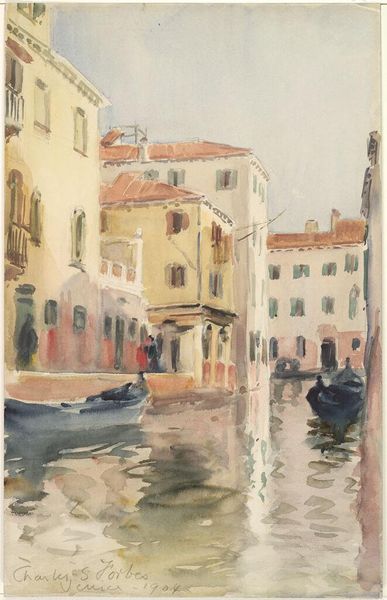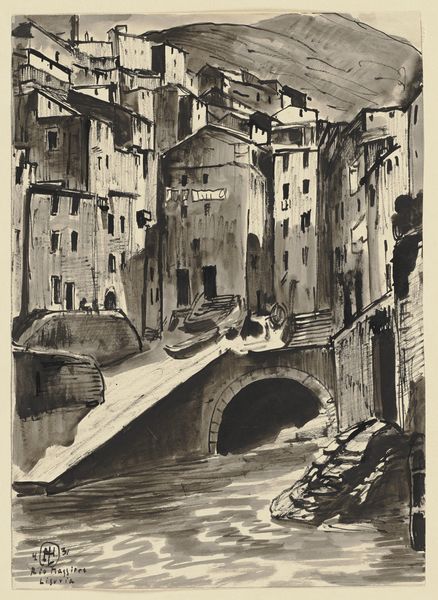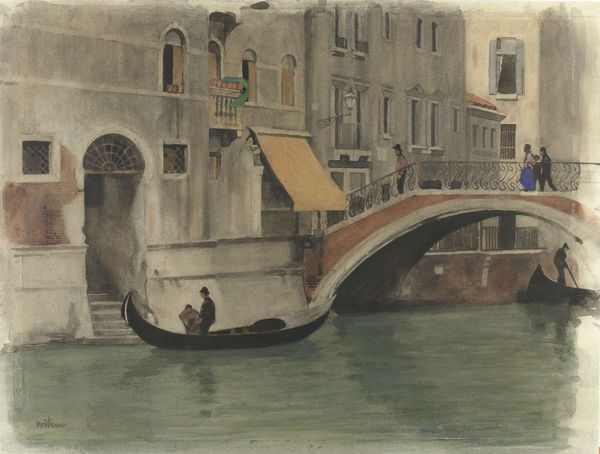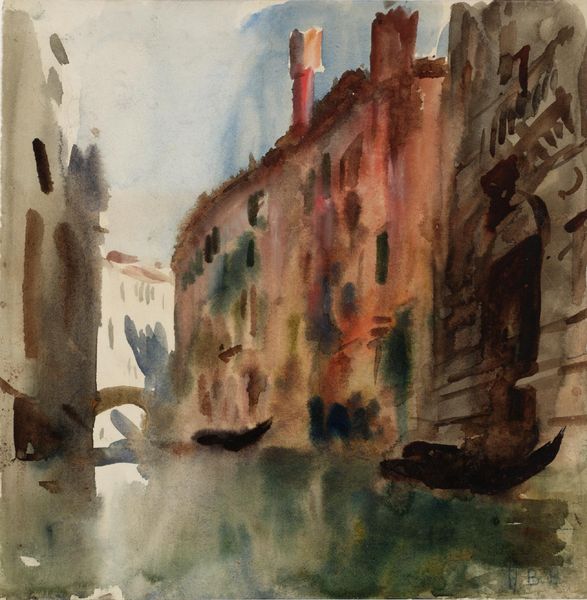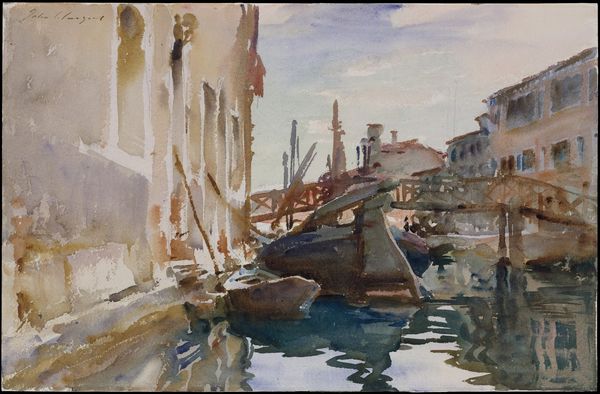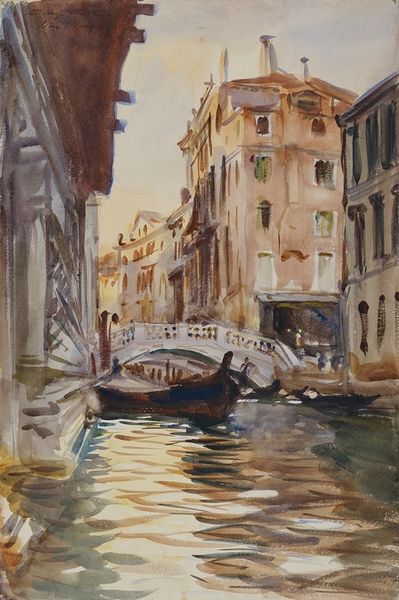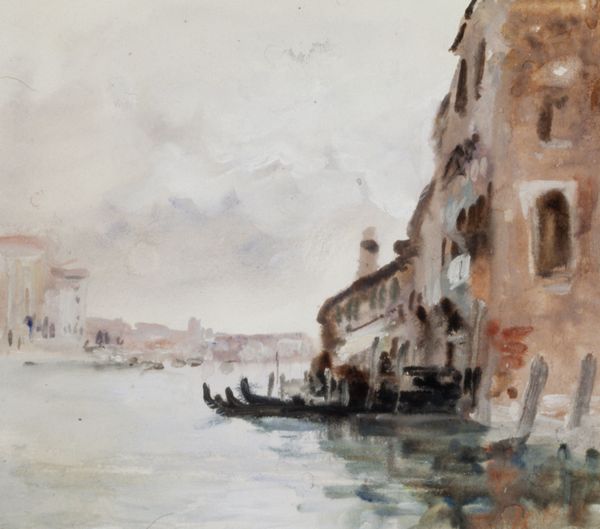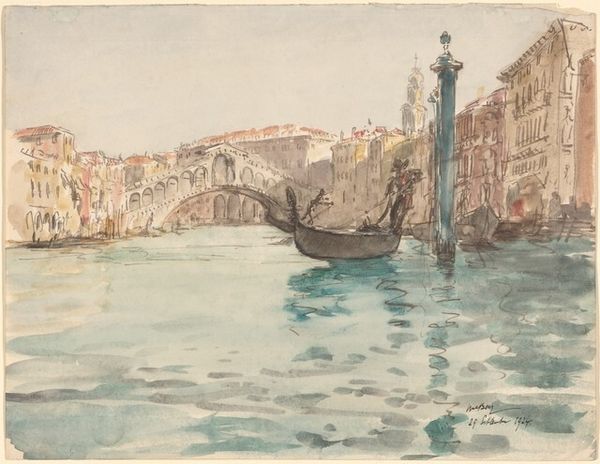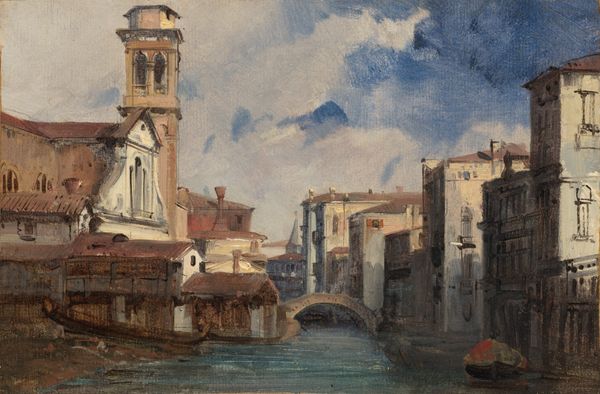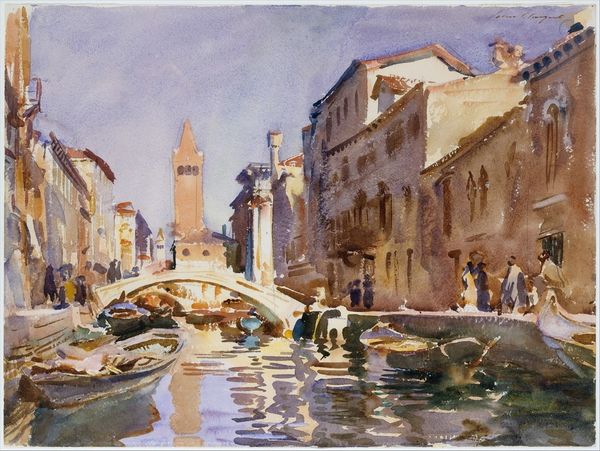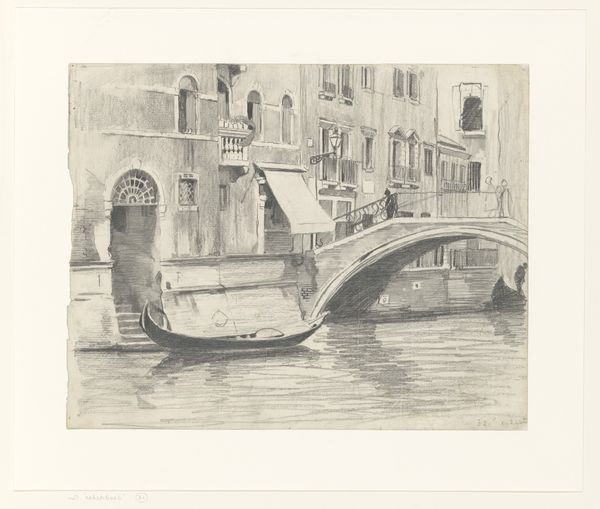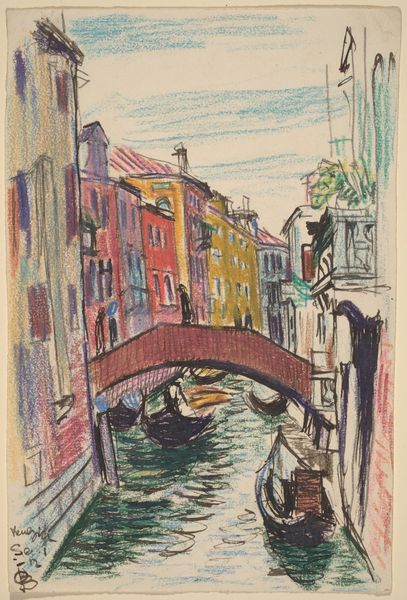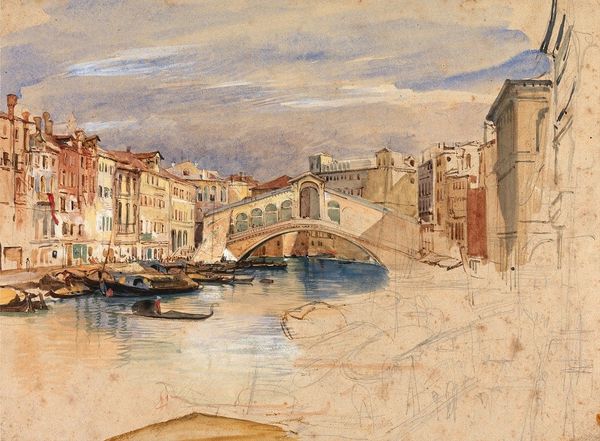
Dimensions: Overall (approximate): 41 x 26.2 cm (16 1/8 x 10 5/16 in.) support: 40.5 x 29.9 cm (15 15/16 x 11 3/4 in.)
Copyright: National Gallery of Art: CC0 1.0
Curator: Immediately I get a sense of hazy light, the feeling of sun-baked stone and a sort of timeless peace. Editor: Yes, the piece has that effect, doesn’t it? What we're looking at is "Canal at Noon," a watercolor made by James McBey in 1925. It's an impressionistic cityscape capturing a Venetian canal scene. Curator: McBey's really captured the reflections on the water, making them feel almost more solid than the buildings. The light almost flattens the depth and distorts reality, creating a strange dreamscape. Is that pure watercolor or are there other media mixed in? Editor: Good question. It looks like a combination of watercolor and drawing on paper, but its seemingly effortless capturing of the scene belies the technical challenges involved. I’m particularly interested in the choices surrounding labor when translating architectural forms via watercolor. Curator: I love how quickly the figures are suggested! Like they’re momentary bursts of activity punctuating the stasis of the scene. I imagine a bustling social scene from the time period, maybe well to do Americans on vacation? What was James McBey's story? Editor: He had a fascinating background as a self-taught artist who worked his way up. He trained as a bank clerk while developing his etching techniques at night. What is fascinating, is how his travels during and after both World Wars influenced his craft. He captured these changing social scenes and documented what he saw through visual media of painting and sketching. This informs much of his broader work across Europe, not only here in Italy. Curator: Interesting, this piece could act almost as a window in time! I do notice a distinct influence in tonal variation; the gradations in shadow and light help to set it apart. Almost photographically so... Editor: The subtle tones and skillful application also demonstrate his understanding of materiality and optics. But for me, McBey reminds us of the value of observation and the process of seeing and representing. It really makes me reflect upon the labor that exists in artistic skill versus material worth. Curator: Indeed, seeing the artistic skill on display in capturing a landscape frozen in time has broadened my perspectives. Editor: Same. The relationship between the artist's skill and the location’s social context is interesting in relation to modernity. It certainly makes me consider my pre-conceptions about landscapes within art production more carefully.
Comments
No comments
Be the first to comment and join the conversation on the ultimate creative platform.
